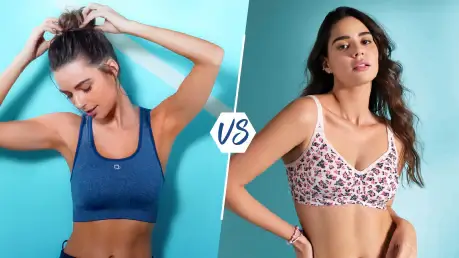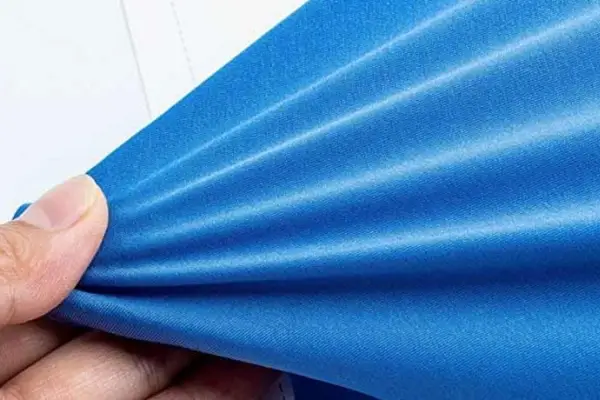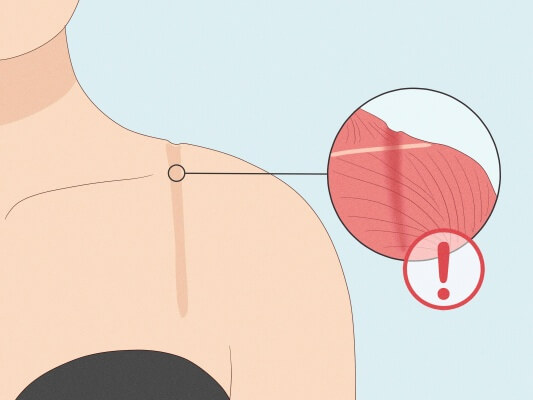Is Your Sports Bra 'Expired'? 3 Professional Signs It's Time for a Replacement
You probably have a favorite sports bra—that trusty one you reach for before every run or gym session. You wash it, wear it, and repeat, until one day you notice a frayed strap or a faded logo. But what if I told you that your bra's most important feature—its support—had "expired" long before it started to look old?
Your sports bra is a piece of technical performance gear, not a regular top. Its support structure degrades with every wash and wear. The three professional signs that it has "expired" are a band that has lost its grip, fabric that has lost its memory, and a fit that is starting to cause new irritation.

As someone who spends their days engineering performance apparel, I can tell you a secret: the magic of a great sports bra is in its tension and elasticity. It's designed to absorb impact and control movement. But just like the shock absorbers on a car, that ability wears out over time. Continuing to exercise in an "expired" sports bra isn't just uncomfortable; it can lead to breast pain, ligament damage, and poor workout form. At HAVING (China) Ltd., we build our athletic apparel to be durable, but no fabric can defy physics forever. Here are the three professional tests to tell if your go-to sports bra is still protecting you, or if it's time to retire it.
Sign #1: Has Your Anchor Lost Its Grip?
You're in the middle of a yoga class or reaching up for a pull-up, and you feel the bottom band of your sports bra sliding up your ribcage. You pull it down, annoyed, and try to refocus. This is more than just an annoyance; it's a critical failure.
The bottom band of your sports bra is designed to be the primary anchor, providing up to 80% of the total support. If the band rides up when you lift your arms, its elastic has degraded. It has lost its grip, and the bra is no longer providing a stable foundation for support.

This is the easiest and most important test you can do. The band should fit snugly and securely around your ribcage, staying in place no matter how you move. When it's new, the powerful elastic in the band creates a firm "chassis" for the entire garment. The straps are only there to provide the final 20% of stabilization. Over time, the elastic fibers in the band get stretched out from wear and broken down by heat from the dryer and chemicals in detergents. They lose their ability to snap back. When this happens, the bra slides up, and the weight of your bust is transferred entirely onto the shoulder straps. This not only leads to painful, digging straps but also means the bra is failing at its primary job: preventing breast movement.
The Anchor Test:
- Put on your sports bra. It should be on the loosest hook if it has one.
- Stand in front of a mirror and lift both arms straight up over your head.
- Watch the band. Does it stay firmly in place against your ribs? Or does it lift or slide up your torso?
- The Verdict: If the band moves significantly, it has lost its tension. It's time for a replacement.
Sign #2: Has Your Fabric Lost Its Memory?
When your sports bra was new, it felt compressive and secure, holding you in place. Now, it feels a bit... loose. You might notice the straps feel flimsy, or the main body of the fabric just doesn't feel as powerful as it used to.
High-performance fabrics get their power from "stretch recovery," or what I call "fabric memory." This is the ability of the elastic fibers (spandex) to instantly snap back to their original shape after being stretched. When these fibers fatigue, the fabric loses its memory, feeling baggy and providing significantly less support.

Think of the spandex in your sports bra like millions of tiny rubber bands woven into the fabric. The first time you wear it, they are strong and snappy. After hundreds of hours of being stretched during workouts and assaulted by heat in the wash, those rubber bands become brittle and lose their elasticity. You can test this easily. Take one of the shoulder straps and stretch it out, then let it go. Does it snap back instantly and powerfully? Or does it return slowly and feel weak? You can do the same with the main body fabric. If the material feels looser or less compressive than you remember, it's a clear sign the elastic fibers have reached the end of their life. Your bra may still look fine, but its ability to control motion is gone.
Sign #3: Is Your Body Protesting?
You've finished a tough workout and notice new red marks on your shoulders that weren't there a few months ago. Or maybe you're experiencing chafing under your arms or along the band for the first time with this particular bra.
Your body is the ultimate truth-teller. If you're suddenly getting new points of friction, chafing, or pressure marks, it's a sign that the bra has stretched and deformed. It's no longer sitting on your body as it was designed to, causing it to rub and dig in all the wrong places.

When we design a sports bra, like the ones in our performance collections, we spend countless hours perfecting the fit on a model. Seams are placed to avoid sensitive areas, straps are angled to distribute pressure evenly, and the band is designed to sit flat. When the bra loses its elasticity and "grows," this precise architecture fails. The band might ride up, causing the armhole to chafe. The stretched-out straps might force all the pressure onto a narrow point on your shoulders. These new red marks are your body's alarm system, telling you that the garment's structure is compromised and it's no longer providing safe, ergonomic support. Listen to your body; it never lies.
Pro Tips: How to Extend Your Sports Bra's Lifespan?
While no sports bra lasts forever, you can significantly extend its effective "shelf life" with proper care. As a manufacturer, these are the care instructions we wish every customer would follow.
To maximize your sports bra's lifespan, you must protect its delicate elastic fibers. The key is to avoid fabric softener, wash it gently in cold water, and always let it air dry. Heat from a dryer is the number one killer of elasticity.

The Care and Keeping of Your Performance Gear
| Pro Tip | Why It Works |
|---|---|
| **Avoid Fabric Softener** | Fabric softeners leave a waxy residue that clogs the micro-pores of performance fabrics, ruining their moisture-wicking ability and trapping odor-causing bacteria. |
| **Wash Cold, Gentle Cycle** | Hot water degrades spandex and other elastic fibers, accelerating their demise. A gentle cycle (ideally in a lingerie bag) prevents straps from getting stretched and tangled. |
| **Always Air Dry** | This is the most important rule. The high heat of a tumble dryer is the fastest way to destroy the elasticity and "fabric memory" of your sports bra. Lay it flat or hang it to dry. |
| **Rotate Your Bras** | Don't wear the same sports bra two days in a row. Giving the elastic fibers at least 24 hours to rest and recover their shape between workouts will significantly extend their life. |
Conclusion
Replacing your sports bra regularly isn't about consumerism; it's an investment in your health, comfort, and performance. Take a moment to check your gear. By ensuring you're always using effective, un-expired equipment, you're giving your body the protection it deserves for every workout.
And for brands looking to create the next generation of durable, high-performance athletic apparel, our team is ready to help you engineer a product built to last.
Frequently Asked Questions (FAQ)
1. How often should I replace my sports bra?
As a general rule, a sports bra has a lifespan of about 6-12 months, depending on how often you wear and wash it. A better measure is 30-40 washes. If you are a serious athlete who works out 5-6 times a week, you may need to replace your high-impact bras every 3-4 months.
2. Is it better to hand wash or machine wash sports bras?
Hand washing in cold water with a gentle detergent is the absolute best way to preserve your sports bra's life. If you must use a machine, always use a cold, gentle cycle and place the bra in a mesh lingerie bag to prevent it from stretching and snagging.
3. Why does my sports bra still smell after washing?
This is often caused by a buildup of bacteria and oils that gets trapped in the synthetic fibers, sometimes made worse by fabric softener residue. Try pre-soaking your bra for 30 minutes in a solution of one part white vinegar and four parts cold water before washing as usual.
4. Can I put my sports bra in the dryer on a low heat setting?
It is strongly recommended to never put a sports bra in the dryer, regardless of the heat setting. The combination of heat and tumbling action is extremely damaging to the delicate spandex fibers and can deform molded cups. Always air dry.
